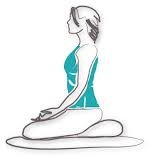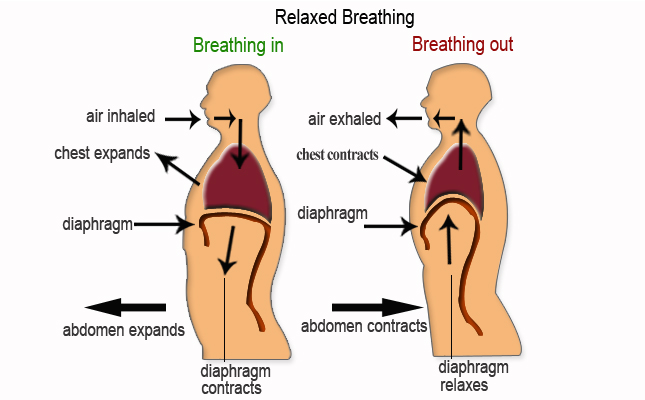Mindfulness with Nathanael ROUX
- Meditation on breathing
Sitting
Sitting is a key element of meditation
that should not be overlooked.

A stable and still
posture influence the mind positively and trigger the mind to cool down.
Sitting have 3 contact points :
- Butt and knees, or
- Butt and feet
The back should be
straight.
Lotus and half lotus posture are not recommended for beginners.
I warmly recommend Burmese posture.
Be cautious: when sitting on cushion (zafu), butt should be located at
the front of it (not in the middle).

Meditation
posture is quite unusual for us at the beginning, so you should be
patient and let it time to flourish.
My experience
At the very beginning
of my meditation practice, I needed two cushions (one on top of the
other)for my knees to touch the ground.
My flexibility and my muscles were not yet developed and I could not
help but move and adjust it regularly.
After months of practice (perhaps one year), I have been able to sit on
only one cushion, with knees touching the ground.
In parallel, my muscles have strengthened; my back became more straight
and stillness births slowly.
As an additional benefit, I sit in a better position in my chair at
work during meetings and in my car when I drive.
Which contribute in a virtuous loop to have a better posture during
meditation practice, my body stop moving, find stillness quickly and
could stay like this longer with less effort.
Even after several years, my meditation posture is still evolving and
improving.
Breathing
mindfully
Goal: become aware
of the breathing process, being mindful to physical sensations linked
to the air movement, coming in during inspiration, coming out during
exhalation.
Help:
Advice:
- Do not try to
influence / change / modify breathing cycle, let it be, naturally and
evolving by itself
- Do not think of
breathing, but feel it, live it
- Each time you
lose contact with the physical sensations of the air coming in / coming
out
- No complaint,
no judgment
Benefit: develop our
capacity of awareness and concentration => mindfulness
Practical exercise: contact the physical sensations linked to breathing
several times per day
Additional benefit: relaxation (activation of parasympathetic system),
stillness, peace and wellbeing

Note:
Breathing is a very interesting process (most of the time overlooked)
- It’s vital (impossible not to
breath more than few seconds)
- At the border between body and
mind
- Automatic, even if we can
voluntary influence it (partially)
- It reflects state of the body
and mind
- Breathing accelerate or slow
down, in respect of body energy consumption (stillness, moderate
activity, sport)
- Breathings rate is modified by
thoughts, feelings and emotions (peace, stress)
- And could be automatically
"requisitioned" in case of danger, becoming top priority (with heart,
with who they work as a duet)
Commentary
Key
meditation phrase for guided meditation:
- I
breath in, mindful and fully aware of the physical sensations of the
air coming in
- I
breath out, mindful and fully aware of the physical sensations of the
air coming out
Breathing
meditation is a key practice, even a seasoned meditator practice
breathing meditation on a regular basis, it’s vital and essential.
Nothing could be developed correctly without an omnipresent practice of
breathing meditation, as you could not build a house without solid
foundations.
Breathing meditation follows us as our shadow and is part of our daily
life integrated in all our activities.
Formal breathing meditation practice should be back-up by informal one:
- Each
time you sit or stand up, you take three mindful breaths
- In
your office seat, in the meeting room seat, in the waiting room, in
bus, train, plane, in your car seat, ...
- Before
taking a phone call
- Before
pushing send button for a SMS or an email
- Before
going to bed or getting out of it
It could
be useful to use a phone alarm, every ½ hour or every hour and each
time it rings to take three mindful breaths.
You could also use unplanned ringing such as: other people phones,
church bell, door bell, gong …
My
experience
At the very beginning,
I was asking myself a lot of questions about the real interest of
breathing meditation, how a so simple practice could be beneficial, why
is it needed to use it so much and how contemplating a so repetitive
process could not become boring and meaningless.
It was clearly because I had a lack of practice and understanding.
Staying quiet for several minutes, keeping in touch with the physical
sensations of breathing could be extremely awakening:
- It’s not at all
so simple
- An incredible
amount of distractions appears and make you lose contact with breathing
- You start very
soon to realize that tons of things are happening in your mind at a
very quick pace, so quick that you have not yet identified the first
one that another one replaced it
- One thought
generate the next one which generate the next and you could be totally
be caught
in it for a long time before noticing it
At the beginning our
capacity to be mindful is extremely weak; to stay in contact with
breathing even just for 3 breaths is a real challenge.
But progressively, step by step, it strengthens and grows.
We also develop meta-awareness, the capability to become aware that we
have been distracted and lost our focus on breathing (which permit to
come back on it more often and quicker).
We start to see the wonderful dimension and complexity of mind and
rising of sensations, thoughts, emotions …
In addition, what arise in the mind become more and more subtle,
breathing sensations become thinner and start a kind of dance:
- If our
mindfulness is not enough developed, we lose contact with the physical
sensations of breathing
- Each time we lose
contact, we have an opportunity to strengthen our mindfulness, if we
catch it our mindfulness increases
- Then we perceive
more subtle sensations
- Again they become
even more subtle and we lose contact again and then loop
Finally, the practice
of breathing meditation is dynamic and evolving process (inside a
meditation session and from one session to another).
And even after several months or years, what is observed
(perceived/seen/known/under the light of mindfulness) is always
different and more subtle.
To conclude, breathing meditation practice enables us to really truly
experience mindfulness, the vast space of consciousness/awareness, warm
and peaceful, where all (whatever appears) could be welcomed without
being disturbed.
Mindfulness could not be described by worlds but only experienced.



